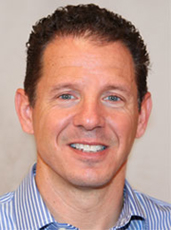
Stem Field
Mechanical Engineering
Title of Research
Experimental fluid dynamics and aeroacoustics and active flow control
Description of Research Area
- A Volumetric Particle Image Accelerometer for Fluid Dynamic Applications
- This project was funded by a DURIP and led to the development of a new instrument capable of tracking fluid particles in a 3D measurement volume in multiple successive images, thereby allowing particle acceleration measurements and eduction of the material derivative in the Navier-Stokes equation. The postdoc would apply this new instrument to a wide variety of flow problems to test its capabilities.
- High Reynolds Number Turbulence Research in Cryogenic Helium
- The objectives of the proposed work are to: 1) develop advanced quantitative molecular tagging velocimetry (MTV) techniques to unlock the full potential of cryogenic helium-4 in fluid mechanics research; and 2) apply these MTV techniques to study high Reynolds (Re) number pipe flows in liquid helium. Many flows in nature have extremely high Re numbers, such as those generated by flying aircraft and atmospheric circulation. Understanding these flows would improve the design in energy efficient applications and our grasp of climate change. Helium-4 has unique material properties that enable the generation of such highly turbulent flows in compact and economical equipment for laboratory research, which would not otherwise be possible with conventional fluids. However, the lack of reliable flow measurement tools in helium has impeded progress in this field.
Special Research & Career Skills
I would work with the postdoctoral scholar in all facets of their career development with an emphasis on future job placement in industry or academia, depending on their objective. I would help define a clear set of objectives and expectations and developed a customized career development plan for the individual. I would have regular meetings to monitor progress and provide ongoing mentoring in technical, professional development (training, teaching as desired, and building collaborative networks), and communication skills (written and oral).
Website Links
